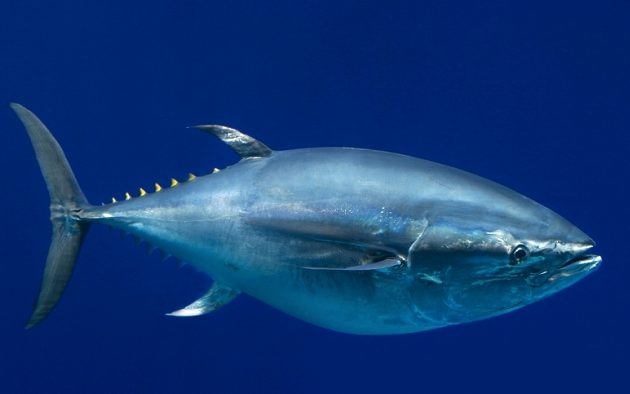Four commercially fished tuna species are on the path to recovery thanks to the enforcement of regional fishing quotas over the last decade, according to an update of the IUCN Red List of Threatened Species released on Saturday, September 4, 2021 at the IUCN World Conservation Congress in Marseille.

However, the recovery comes amid growing pressures on marine species, with 37% of the world’s sharks and rays now threatened with extinction primarily due to overfishing, compounded by loss and degradation of habitat and climate change.
The IUCN Red List now includes 138,374 species of which 38,543 are threatened with extinction.
“Today’s IUCN Red List update is a powerful sign that, despite increasing pressures on our oceans, species can recover if states truly commit to sustainable practices,” said Dr Bruno Oberle, IUCN Director General.
“States and others now gathered at the IUCN World Conservation Congress in Marseille must seize the opportunity to boost ambition on biodiversity conservation, and work towards binding targets based on sound scientific data. These Red List assessments demonstrate just how closely our lives and livelihoods are intertwined with biodiversity,” Oberle added.
In the Red List update, the seven most commercially fished tuna species were reassessed. Four of them showed signs of recovery thanks to countries enforcing more sustainable fishing quotas and successfully combatting illegal fishing. The Atlantic bluefin tuna (Thunnus thynnus) moved from Endangered to Least Concern while the Southern bluefin tuna (Thunnus maccoyii) moved from Critically Endangered to Endangered. The albacore (Thunnus alalunga) and yellowfin tunas (Thunnus albacares) both moved from Near Threatened to Least Concern.
Despite global improvement at the species level, many regional tuna stocks remain severely depleted. For example, while the larger, eastern population of Atlantic bluefin tuna, which originates in the Mediterranean, has increased by at least 22% over the last four decades, the species’ smaller native western Atlantic population, which spawns in the Gulf of Mexico, has declined by more than half in the same period. The yellowfin tuna meanwhile continues to be overfished in the Indian Ocean.
“These Red List assessments are proof that sustainable fisheries approaches work, with enormous long-term benefits for livelihoods and biodiversity. We need to continue enforcing sustainable fishing quotas and cracking down on illegal fishing,” said Dr Bruce B. Collette, Chair of the IUCN SSC Tuna and Billfish Specialist Group. “Tuna species migrate across thousands of kilometres, so coordinating their management globally is also key.”
The Pacific bluefin tuna (Thunnus orientalis) moved from Vulnerable to Near Threatened in this update due to the availability of newer stock assessment data and models. This species remains severely depleted at less than 5% of its original biomass. Other tuna species reassessed for this Red List update include the bigeye tuna (Thunnus obesus) which remains Vulnerable, and the skipjack tuna (Katsuwonus pelamis) which remains Least Concern.
Saturday’s IUCN Red List update also includes a comprehensive reassessment of the world’s shark and ray species, which reveals 37% are now threatened with extinction, demonstrating that effective management measures are lacking throughout much of the world’s oceans. All the threatened shark and ray species are overfished, with 31% further affected by loss and degradation of habitat and 10% affected by climate change.
Komodo dragon threatened by future impacts of climate change
The world’s largest living lizard, the Komodo dragon (Varanus komodoensis), has moved from Vulnerable to Endangered on the IUCN Red List. The species, which is endemic to Indonesia and occurs only in the World Heritage-listed Komodo National Park and neighbouring Flores, is increasingly threatened by the impacts of climate change. Rising global temperature and subsequent sea levels are expected to reduce the Komodo dragon’s suitable habitat by at least 30% in the next 45 years.
In addition, while the subpopulation in Komodo National Park is currently stable and well protected, Komodo dragons outside protected areas in Flores are also threatened by significant habitat loss due to ongoing human activities.
